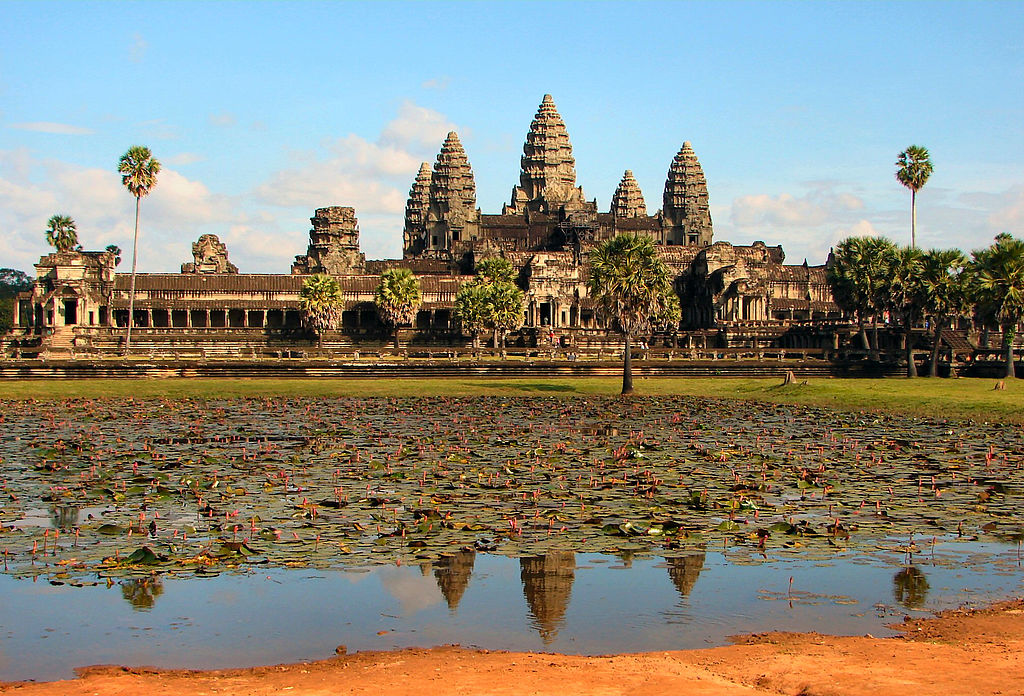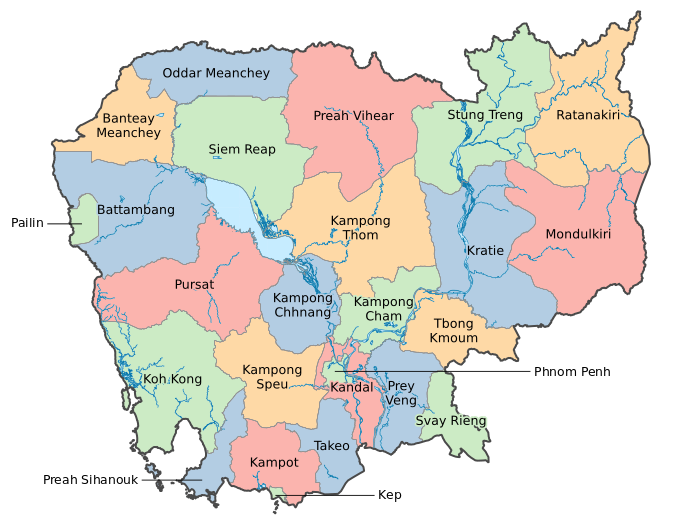Minerals of Cambodia



Cambodia is a country of the South East Asian region. It is famous for the art and architecture of the Angkor Watt temple. The country has rich cultural heritage and traditional past. Its neighbors are Thailand, Laos, and Vietnam. It has coast line along the gulf of Thailand. Cambodia is a princely state. The King is the head of the state. There is an elected parliament. The prime minister is the head of the government and elected by the parliament. He is the leader of the parliament and has the support of the majority members of the parliament. The society of Cambodia went through civil war, genocide, and terrorism for a prolonged time. Now there is stability and peace in that region and Cambodia moves towards development and prosperity.
Cambodia has an area of 181035 sq.km .The population is around 15 million. The capital city is Phnom Penh. The climate of this country is tropical and subtropical in nature. The temperature goes up to 37 'C in summer and goes down to 18'C in winter. Rice is the main crop of the people of Cambodia. The Mekong delta is very fertile and good for rice cultivation. The people also grow fruits, vegetables, cotton and bamboo. Poultry, fishery and diary are other activities of the people. The handloom industry is very popular among the local people of Cambodia. The garment industry is growing in cities and urban centers. Semi mechanized fishing in the Mekong River and in the gulf of Thailand is also picking in the recent years.
Cambodia is having plain lands in the south and hilly lands in the east, west and northern part. The central part is rolling land with some river valleys. The hills and rolling lands are composed of Precambrian rocks. The delta and river valleys are composed of rocks of Tertiary and Quaternary period. The Paleozoic sandstones are found in many places. The major rocks of Cambodia are granite, gneiss, schist, pyroxenite, basalt, pagodite, sand stone, limestone, slate and laterite. Cambodia was a protectorate of the government of France in the 19th and 20th century. The geological survey and the mineral exploration activities were started by the French geologists in the early part of the 20th century. The Chinese geologists conducted the mineral exploration work during the latter part of 20th century and early part of the 21st century.
Cambodia is rich in minerals and building stones. The minerals like iron ore, chromite, antimony, manganese, molybdenum, tungsten, bauxite, copper, lead, zinc and tin ate found in Cambodia. Gold is also found in many places of Cambodia. Industrial minerals like dolomite, limestone, fluorite, graphite, rock phosphates and silica sands are found in large deposits. Coal and lignite deposits are found in Cambodia. Gem stones like sapphire, ruby, zircon and amethyst are found in many places. Building stones like granite, baast, laterite, sand stone, pagodite, rhyoliteand sandstone are also found in large quantities. Construction sands are found in the streams and river beds. Clay for bricks and tiles are found along river beds and low lying areas.
General Department of Mineral Resources is the nodal agency for grant of exploration license in Cambodia. It is under the Ministry of Industry, Mines, and Energy, Kingdom of Cambodia. Around 91 companies from Australia, China, Vietnam, Thailand and Cambodia are given licenses for mineral explorations. The minerals selected for detailed exploration are iron ore, gold, copper, bauxite, coal, antimony, chromite, silica sand and kaolin. Regular mining is started in 13 projects. These are gold iron ore, lime stone, and phosphate mining projects. Regular and extensive mining is started for the Mondulkeri gold project and Kraite province coal project. To attract domestic and foreign investment in mining and mineral exploration, the law on Management and Exploitation of Mineral Resources was promulgated on July 13th 2001. The law has 42 articles spreading over 10 chapters, governing the management and exploitation of the mineral resources in the Kingdom of Cambodia.
Cambodia is not able to develop its mineral resources due to civil war, political instability and poor infrastructural facilities. The infrastructures like road, railway, port, power generation, air links, internet and telecommunication are to be developed on priority basis. The site of Angkor Watt has to be developed and more tourists are to be attracted to Cambodia.